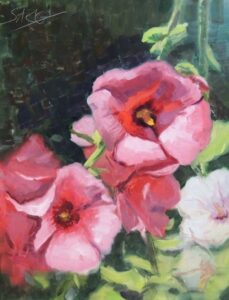
by Drew Sarka
11″ x 14″ Oil
OR Three Ways to Reverse Engineer Art You Love
Pablo Picasso is famous for saying, “Good artists copy, great artists steal.” In my opinion, creating art work that is honest is one of the most important commitments that an artist should make. So I have no interest in stealing anyone’s artistic ideas nor style. However, there is an abundance of incredible art available to view and so many lessons to learn from each painting. As artists, it is our duty to constantly push ourselves and continue to learn. In a way, pursuing art is like committing to an unending personal journey of discovery; constantly interpreting the visual world and distilling it onto canvas. One way to learn from the artists who you admire is to systematically deconstruct their paintings. Apply some reverse engineering principles to your favorite paintings and prepare to learn.
It is not uncommon to break down complex systems into smaller more manageable parts in order to understand and master. In studying science, this practice is common protocol-modus operandi. When I was in medical school, we learned anatomy by systematically breaking each body system into smaller more comprehendible units. This allowed for understanding the underlying structure in greater detail. Artists have also been known to do this. Leonardo Da Vinci dissected cadavers to learn human anatomy. He also created incredible drawings of his studies. In fact, Alastair Sooke has said, “If Leonardo da Vinci’s uncannily accurate studies of the human body had been published in his lifetime, they would have changed the course of science.” So the art of deconstruction is nothing new.
How can we efficiently break down paintings? Well first, I would suggest evaluating the composition. You may ask yourself the following questions.
- What makes the composition unique in any way? For instance, what is the perspective
of the subject? - What is the compositional stem of the painting (See Edgar Payne’s book on
composition for clarification). - Is there a focal point and if so where is it located?
- What artistic devices does the artist use to highlight the focal point?
- How does the artist lead the viewer’s eye through the painting and by
what artistic devices?
Look at the Value Structure
I think the best way to understand the underlying structure of the painting is to understand the value structure. For example, how does the artist group the values into a cohesive design? I would recommend actually drawing out a 2-value thumbnail sketch of the painting (just like what many artists do prior to beginning their own painting). Analyzing this 2-value sketch should really help understand the large design of the painting. I have done this exercise many times myself. I have found that the strongest compositions tend to have dynamic, integrated value shapes that create an interesting pattern within the painting. This is very intentional by the artist. Below is one of my paintings and next to it a quick two value sketch of the painting.
16″ x 20″, Oil
Identify the Color Scheme
You may also want to evaluate the color scheme and ask yourself these questions.
- Is there evidence of color theory? Is the artist using a common scheme such as
complementary colors or a triad? - Are the colors bold and intense like a Walt Gonske painting or subdued and greyed
typical of many of Andrew Wyeth’s paintings? - What is the most common color in the painting? Which color is the most intense?
- And probably most importantly, do the colors describe well the intensity and quality
of the light source?
For example, Joaquin Sorolla painted in the intense sunlight of Spain. His paintings tend to superbly convey light and shadow with intense warm colors in the sunlit areas. One way to analyze the colors: use the painting as a reference and do a small sketch. When doing this, create separate color notes. Below is one of my paintings and next to it color notes taken from the same painting.
24″ x 36″, Oil
Evaluate Transitions
Lastly, I would evaluate the transitions or edges.
- Where are the edges hard and crisp?
- Where have the edges been lost by juxtaposing two equal values?
- Is there a rhythm or gradation of the edges throughout the painting?
- Does the artist blend edges mechanically with a tool like a scraper or are the
transitions created by a series of discrete shapes in order to create a
‘softer’ edge?
I hope this inspires some who have not systematically evaluated paintings in the past to begin this process. As an artist, you may have very particular interests and thus the evaluation would include some of your own specific objectives. The number of questions you may ask yourself to evaluate paintings is almost limitless. It’s just important to keep asking the questions.
Good luck!
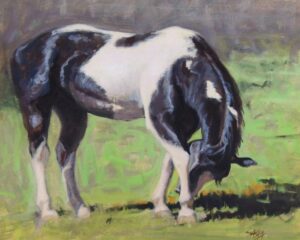
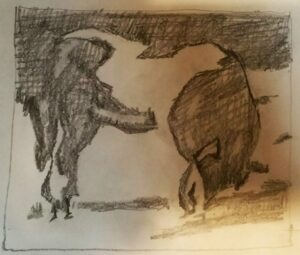
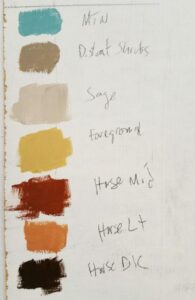
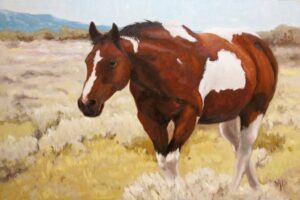
Kelli Folsom says
Very good article!
Mary Rose says
I really enjoyed the article and his paintings.
Colette Claros says
Excellent and informative! Thanks for giving me some things that will really make me think and grow as an artist.